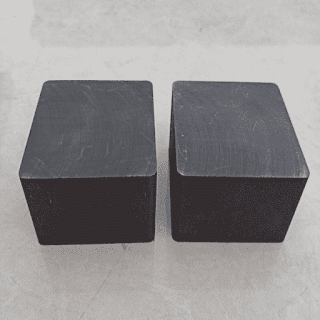High-power and ultra-high-power graphite electrodes
The development of electric furnace steelmaking technology has continuously put forward requirements for the variety and performance of graphite electrodes. The use of high-power and ultra-high-power electric furnaces for steelmaking can shorten the melting time of the charge, increase production efficiency, reduce power consumption and reduce the consumption of graphite electrodes .
According to the transformer capacity per ton of furnace capacity, electric arc steelmaking furnaces can be divided into ordinary power furnaces, high power furnaces, and ultra-high power furnaces. According to the classification of the electric power level of electric furnace steelmaking, and according to the difference of the raw materials used to produce the electrode and the difference of the physical and chemical indexes of the finished electrode, the corresponding ginger graphite electrode is divided into 3 varieties: ordinary power graphite electrode (RP), high power graphite electrode (HP) , Ultra-high power graphite electrode (UHP).

Ordinary power graphite electrodes are produced from ordinary petroleum coke, with low graphitization temperature, high resistivity, large linear expansion coefficient, and poor thermal shock resistance, so the allowable current density is low. High-power graphite electrodes are produced from high-quality petroleum coke, and sometimes the electrode body needs to be impregnated. Its physical and mechanical properties are higher than those of ordinary power graphite electrodes, such as low electrical resistivity and larger current density. The ultra-high-power graphite electrode must be produced with high-grade needle coke, and its graphitization heat treatment must be carried out in an in-line graphitization furnace, and the graphitization temperature is 2800~3000. C, so the resistivity is lower, allowing a greater current density to pass, the linear expansion coefficient is smaller, and it has excellent thermal shock resistance.


Comments
Post a Comment